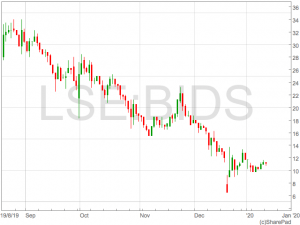Bidstack (LON:BIDS) are expanding into the very exciting gaming industry and have recently announced agreements with a major agency, a key step to future success.
However, Bidstack are attempting to enter an extremely competitive programmatic advertising network market and will be taking on some of the world’s largest technology companies.
Although Bidstack are providing innovations through the context of in-game displays such as football hoardings, they lack a significant function other digital advertising in direct engagement.
The Beauty of advertising networks run by Google, Amazon and Facebook at is the ability to drive and track engagement with adverts.
Whether it be display banner adverts run by Google or an advert to download an App through Instagram, advertisers are able to measure the effectiveness of their adverts by tracking clicks, downloads or sign ups and analysing the cost per engagement.
Bidstack Business Model
Here lies the fundamental flaw in Bidstack’s model. Adverts run through Bidstack’s inventory is void of opportunity for engagement.
Bidstack have said they don’t want to ruin the immersive experience of gaming. This is attractive to the game developer, but not so much to potential advertisers.
Can you imagine a gamer playing Fifa online and pausing their match mid flow to interact with an advert and buy a product?
It seems unlikely. Firstly because the functionality isn’t there and it is very doubtful to ever be there at a meaningful scale. Secondly, and most importantly, gamers are going to have little propensity to stop their game and make third part purchases, even if they could.
 This removes a lot of the potential value from Bidstack’s business model when compared to the traditional digital advertising networks.
This removes a lot of the potential value from Bidstack’s business model when compared to the traditional digital advertising networks.
However, it doesn’t render it completely worthless. The attention of gamers carries significant value. Twitch is an example of this.
The challenge for Bidstack is their inventory merely replicates an out-of-home advertising model but places it in a digital environment, without the interaction enjoyed by other forms of digital advertising. This may raise questions among the major agencies when creating plans for the world’s leading advertisers.
Demographics
Despite engagement presenting a potential hurdle, Bidstack does provide value to advertisers in the form context and the ability to gain the attention of a specific demographic.
Harnessing this effectively is where long term shareholder value should be created given the recent decline in social media users. The recent slow down could signal a top in advertising growth through Facebook, Instagram and Twitter.
This is of course a high risk assumption given the resources of the social media giants, but it may play into Bidstack’s hands.
“Bidstack is a very interesting proposition and appeals to me as a more speculative aim stock. They look to have coupled up two sectors in a partnership that will see advertising delivered to a huge demographic in a new, unique and very passive way,’ said John Woolfitt of Atlantic Capital Markets.
Summarising the potential risk of Bidstack’s model John Woolfitt continued “with any company like this you must see it for what it is, this is no defensive income share and it will need potential investors to understand the concept. Shares like this should occupy the smaller more speculative section of your overall portfolio.”
“That all being said the company is well positioned to take advantage of the evolving technology, and as a lot of gamers globally are now in their 30’s and have disposable income they are well positioned to catch the opportunity at a time that has now seen the consumers become a valid audience for advertising.”
Bidstack (LON:BIDS) listed in 2018 at 6p per share and currently trade at 11p, having reached highs of 42p in June.
